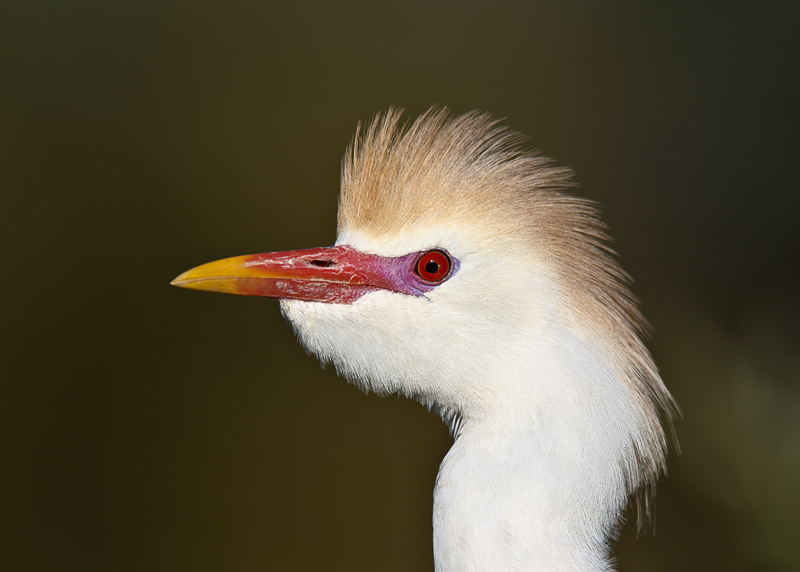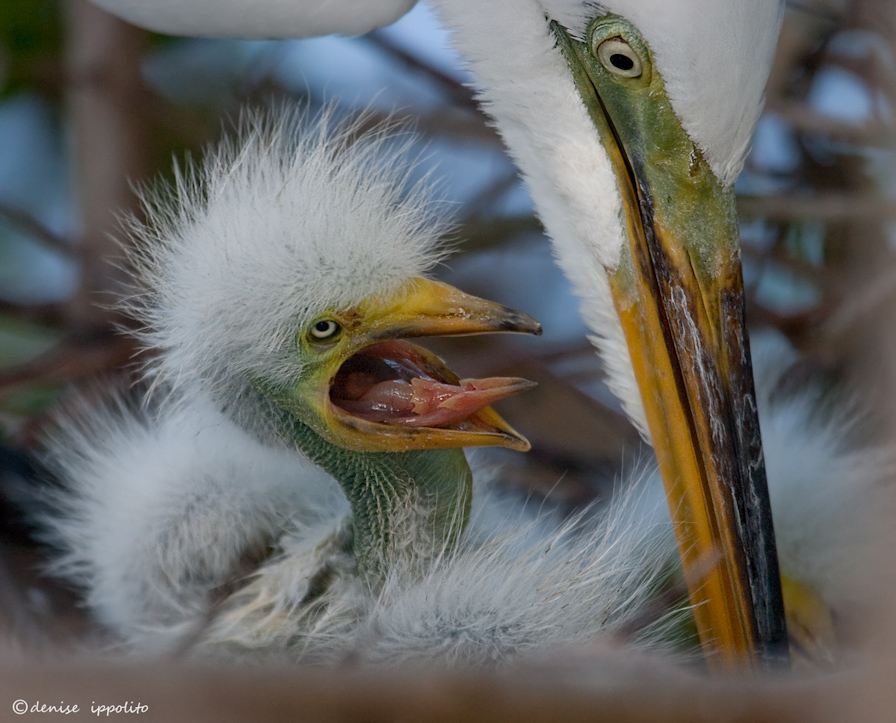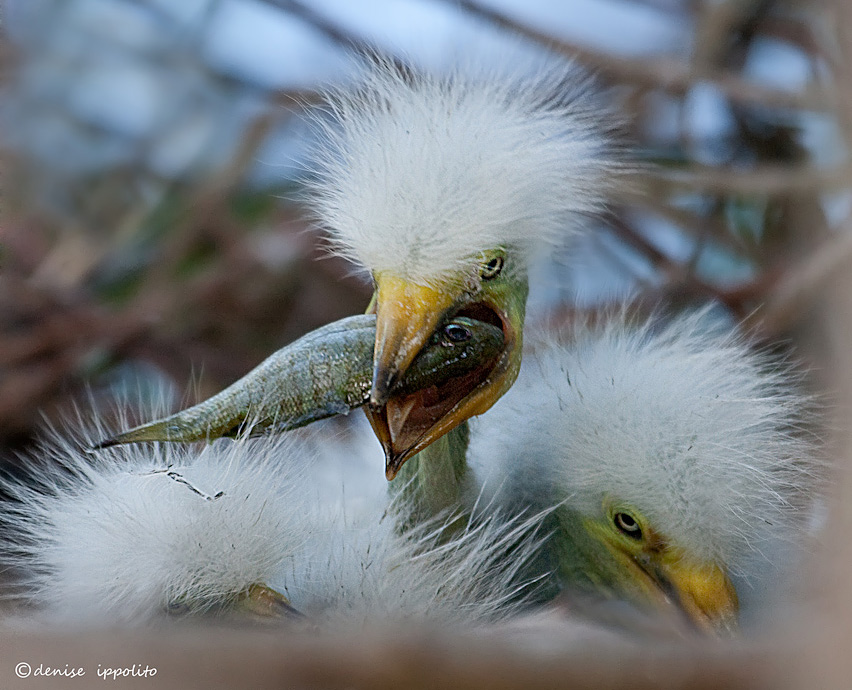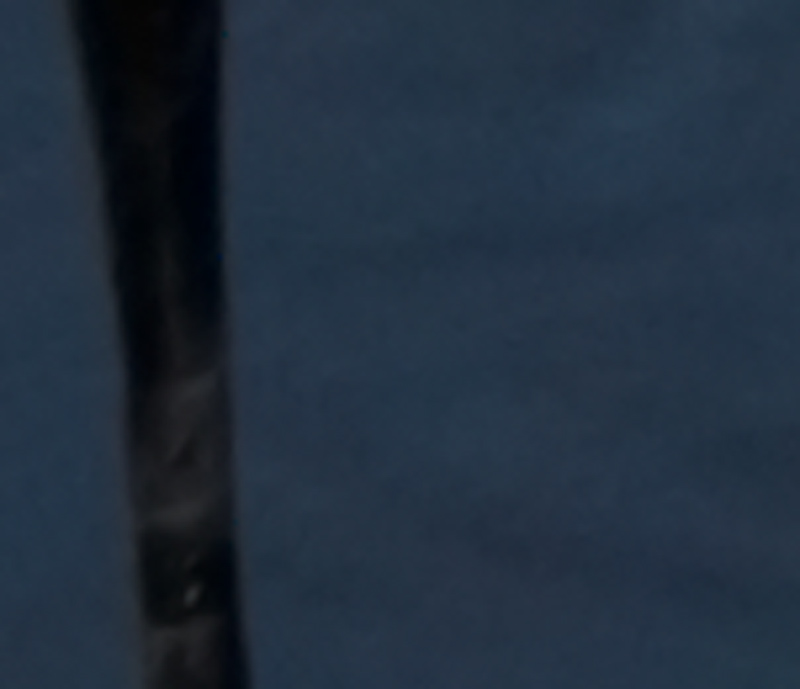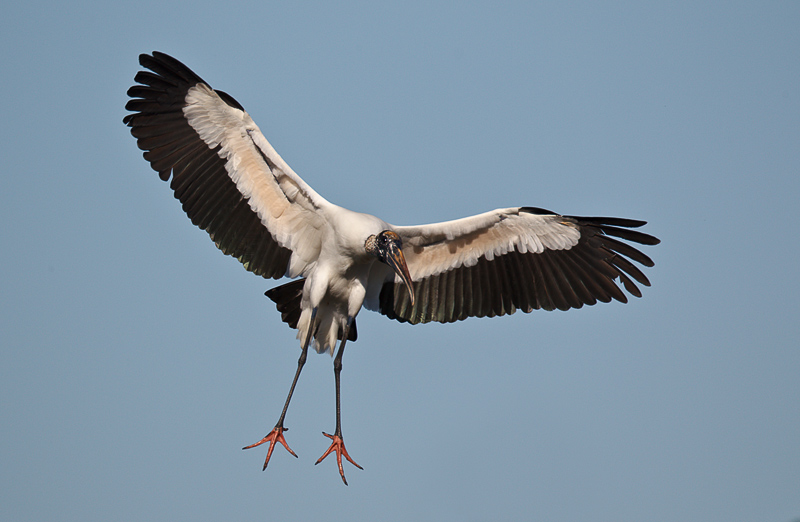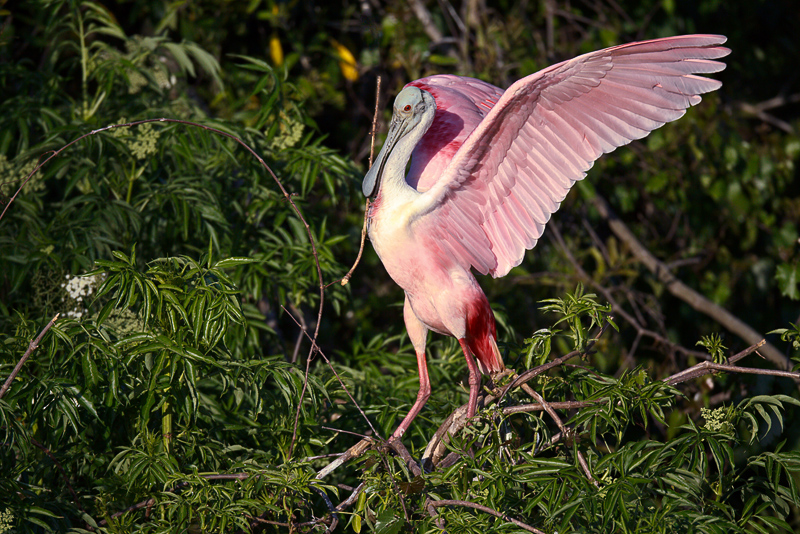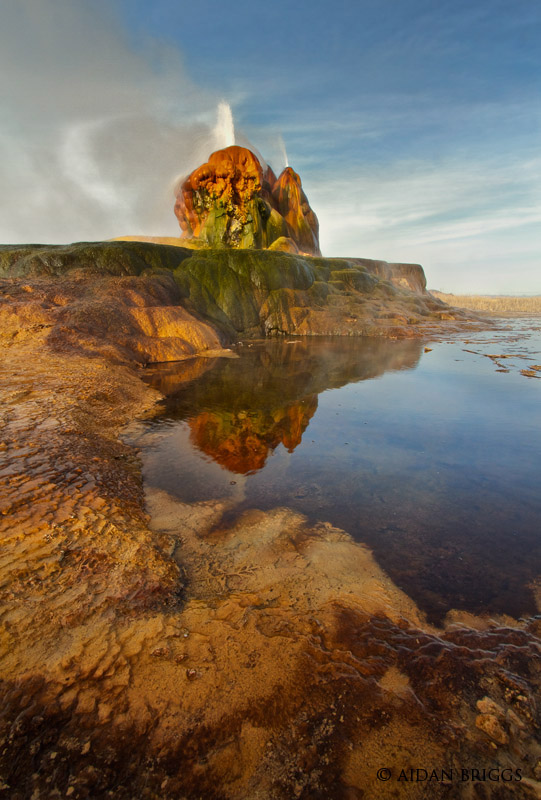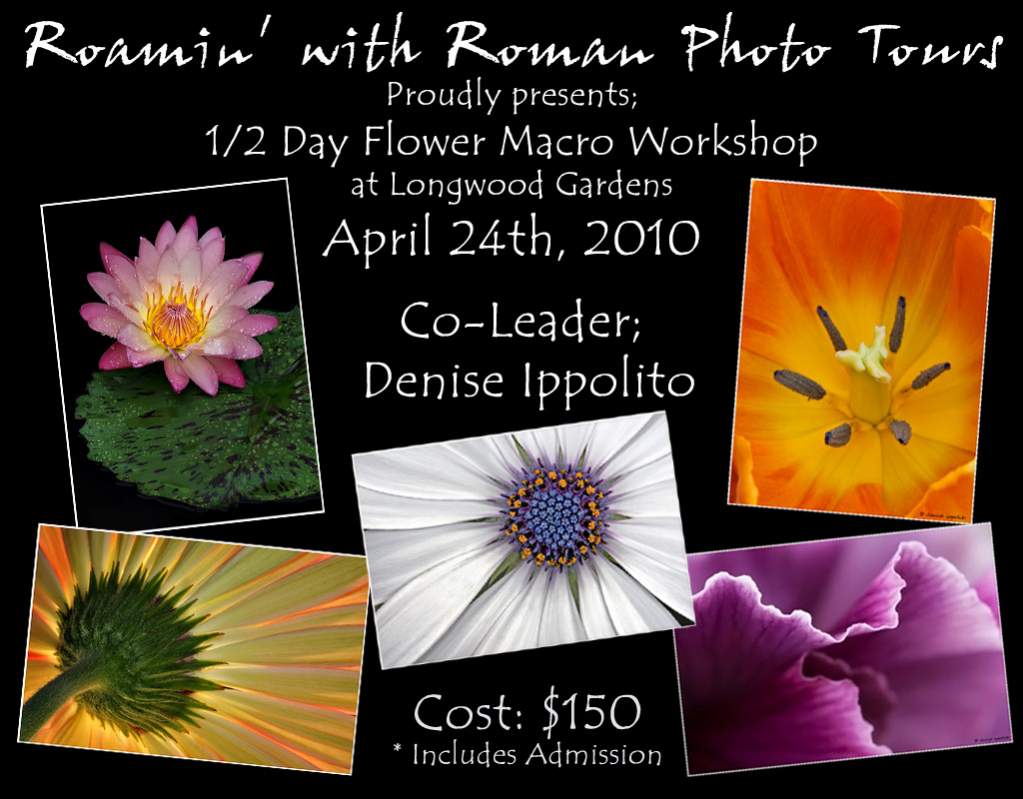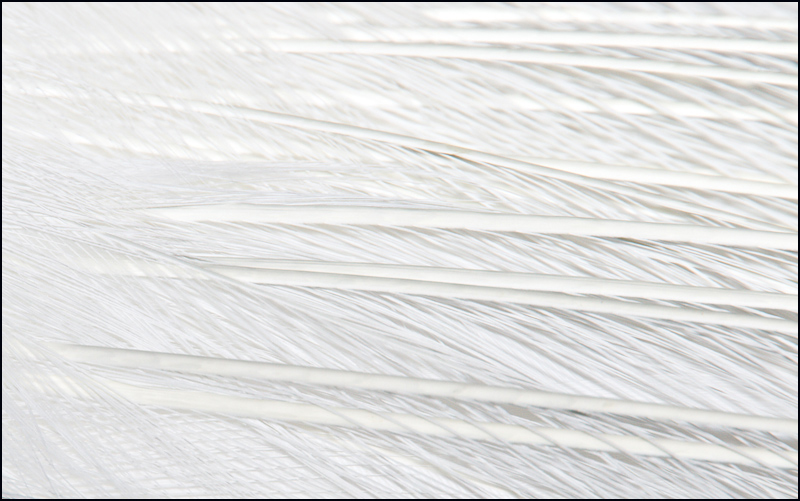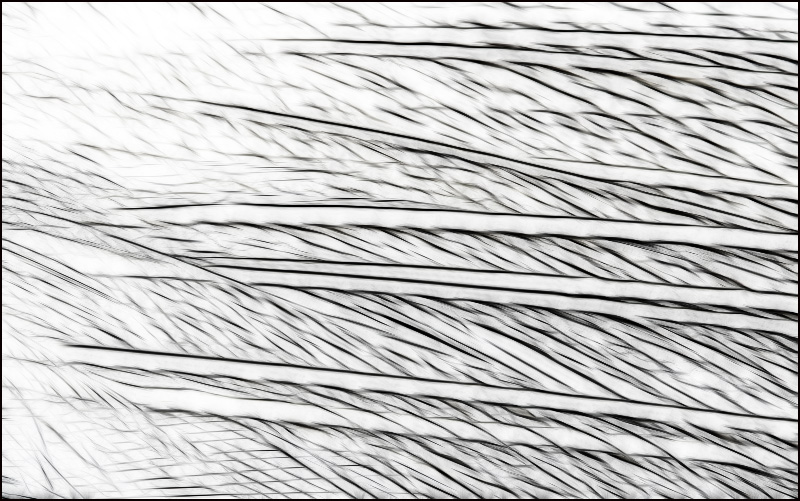Birds As Art Bulletin #323
April 19, 2010
Arthur Morris/BIRDS AS ART, PO Box 7245 4041
Granada Drive, Indian Lake Estates, FL 33855. Telephone: 863-692-0906.
Computer fax: 877- 265-6955
Important Note:
Please give the images a minute or two to load and do make sure that your
security settings are not preventing you from seeing them. Some
folks simply need to click on Show (or Allow) Images on the frame of the
e-mail. If you have any trouble at all viewing this Bulletin, you can access
it in the Bulletin Archives here:
www.birdsasart.com/bn323.htm
Managing your
subscription:
If you need to unsubscribe,
change e-mail addresses, or re-subscribe, it is far easier for you to manage
your subscription than it is for us to do.
At the bottom of the last
Bulletin you received you'll see a grey bar like this:
Only it will show your
e-mail address not the one for my laptop <smile> If you wish to
unsubscribe, simply click on that button. To add a new address, click
on update profile and you'll be able to do so. (When we attempt to manually
manage folks' subscriptions with our new distribution system it can, for lack
of a better term, get us into trouble : ) If
you have mysteriously stopped receiving Bulletins recently, please check your
Spam Folder and your security settings. If no luck, try subscribing
again by clicking on this link on the home page:
VERY IMPORTANT NOTE: If you are
responding to a Bulletin via e-mail please take the time to delete all
irrelevant text and images. Thanks.
BirdPhotographers.Net:
Inspirational, Educational, & Fun. Honest critiques done gently:
www.BirdPhotographers.Net
(It Ain't Just Birds!)
The BIRDS AS
ART BLOG: Great info with a personal touch, great images, and our legendary
BAA educational captions:
www.BIRDSASART-Blog.com
FEATURES:
GALAPAGOS 2011
PHOTO-CRUISE OF A LIFETIME IPT
ALLIGATOR ROOKERY TIPS
GATORLAND
CANON EOS-7D USER'S GUIDE
INFO
CANON EOS-1D MARK IV
USER'S GUIDE INFO
AIDAN BRIGGS
LONGWOOD GARDENS,
PENNSYLVANIA MACRO WORKSHOP
POSSE NEWS/JIM NEIGER
POSSE NEWS/ROBERT AMORUSO
IPT UPDATES
VERY IMPORTANT
NOTE: If you are responding to a
Bulletin via e-mail please take the time to delete all irrelevant text and
images. Thanks.
Cattle Egret, breeding plumage, Gatorland, Kissimmee, FL
Image copyright 2010/Arthur Morris/BIRDS AS ART
Canon 800mm f/5.6 L IS lens with the 1.4X II TC and the EOS-1D Mark IV. ISO
400. Evaluative metering -1/3 stop: 1/1250 sec. at f/8.
Cattle Egrets in breeding plumage are one of my very favorite avian
subjects. There was nothing good in sight so I kept moving when
I saw this bird land on a tall perch. I moved to the sun angle with my
shadow pointing right at the subject and waited for the raised crest and a
good head angle. Voila! See item 2 below: ALLIGATOR ROOKERY
TIPS.
GALAPAGOS 2011 PHOTO-CRUISE OF A LIFETIME IPT
2011 Galapagos Photo Cruise of a Lifetime IPT/The Complete Galapagos
Photographic Experience: July 3-20, 2011
(July 5-19, 2011 on the boat):
13 1/2 days of photography plus a last morning
panga ride: $12, 499. (Limit 11/Openings 3)
This two-week trip
features an unparalleled photographic itinerary that will visit all the
great spots in the islands; we will not miss a thing. The highlights
include Tower Island—tons of nesting birds at knee and eye level, Punta
Espinoza (Flightless Cormorants), Puerto Ayora (tortoises in their natural
habitats), Hood Island (Waved Albatross and lots more nesting birds),
South Plaza, and North Seymour. Each of these locations is on a par
with Antarctica or East Africa when it comes to spectacular photographic
opportunities. If you make only a one week cruise you will miss half
of these great locations. With two full weeks we will enjoy a
relaxed pace with shorter navigations and lots of time for snorkeling,
image sharing, and small group Photoshop instruction. You will have
a great photographic leader (that would be me) with 7 years of Galapagos
experience teamed with the very best most knowledgeable guide in the
entire archipelago.
We will
be the first boat on each island in the morning and the last boat to leave
each island every afternoon. If we are blessed with overcast
weather, we often spend as much as six hours on a landing. Jeez,
I almost forgot our spectacular and romantic motor sailing ship, the
Beagle: www.thebeagle.com.ec
The group will be flying
to Quito on their own to arrive on July 3, 2011. We have a travel
insurance day on July 4th (with an optional trip for perched hummingbirds
at Tandayapa). On the morning of July 5 we fly to the Galapagos and
board the boat around midday. We leave the boat two weeks
later on morning of July 19 after our last photo session, a short panga
ride. We fly back to Quito on that same day, July 19, overnight in
Quito, and fly home on the morning of July 20.
Note:
some of the walks are strenuous.
Though I will be
bringing my 800 f/5.6L IS lens along, I used it only rarely last year; great
images are possible on all landings with a hand held 70-200mm lens.
Please e-mail me at birdsasart@att.net
for the complete 2010 itinerary. The
2011 itinerary will include all of the A-list landings but may be
tweaked a bit beyond that.
Happy campers only
<smile> As of this moment, I have room for only three more folks
and am in need of one single male roommate for a male participant.
If a roommate-less woman wishes to sign up her reservation would be
dependent upon my finding a single female roommate for her (unless they
are open-minded). And the same will be true for the guys traveling on
their own once a single male signs up. At this point I do have room for
one couple. Note: there are no queen or double beds on the Beagle.
Each double cabin has a larger lower bed and a smaller upper one.
If worse comes to worse it will come down to a coin flip <smile> as to
which roommate gets which bunk. Sleeping on the upper deck
is an option in fair weather. I have done it and it was a
mega-experience.
The cost of the 2011
trip is $12, 499. The price increase (from the 2010 trip) is due
to a 12% increase in the cost of leasing the boat but still represents a
tremendous value as compared to the cost of two week long trips. The
last one week trip that I ran worked out to $1272.55 per day of
photography. None-the-less, all 13 of the photographer clients
were beyond thrilled with the trip. The 2011 trip will represent
an incredible value at $909.01 per day of photography.
Included: three nights in the luxury hotel--the Hilton Quito Colon,
round trip airfare to and from the Galapagos, all meals on the boat, a
killer buffet lunch with the tortoises!, all park fees and related
costs, all transfers, and a five star thank you dinner on our last
evening in Quito.
Not
included. Your round trip airfare from your home to and from Quito,
beverages, phone calls, and the $500/person tip for the guide and the
crew.
A $5,000
non-refundable deposit per person is due
immediately. Please
call me at 863-692-0906 or 863-221-2372 before sending your deposit to
check availability.
Please
print, sign, and return these two forms along with your deposit checks: http://www.birdsasart.com/Registration%20and%20Release%20Forms.pdf
Two
additional non-refundable payments will be due as follows: $4000 due on NOV
1, 2010. Final payment: $3,499 will be due on
FEB
1, 2011.
We will be glad to take $200 off per person on the final payment if you
register with a friend or with your spouse or life partner.
Travel insurance is of course beyond highly recommended
as none of your payments are refundable. You need to protect
yourself in case of an unexpected illness or accident or other
unforeseen developments.
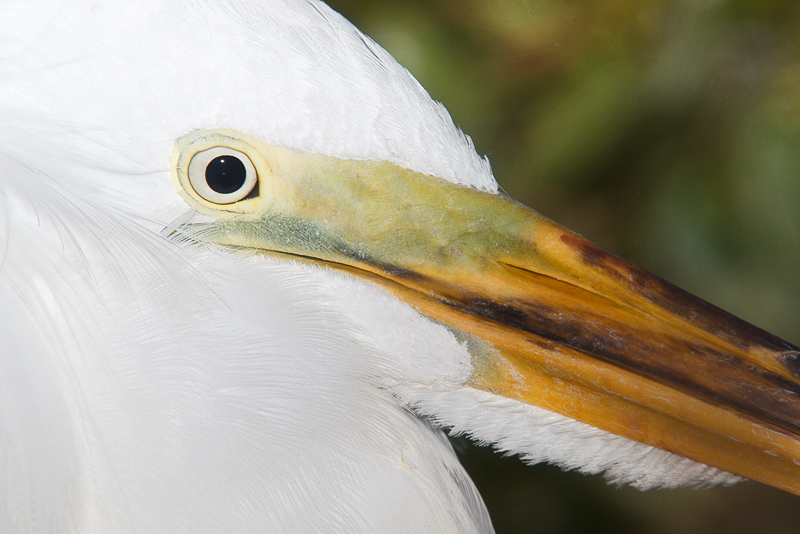
Great Egret on nest, face, Gatorland, Kissimmee, FL
Image copyright 2010/Arthur Morris/BIRDS AS ART
Canon 400mm f/4 IS DO lens (handheld) with the 1.4X II TC, 37mm of
extension, and the EOS-1D Mark IV. ISO 400. Flash as main light with
Better Beamer: 1/250 sec. at f/16. Manual flash at 1:8. To learn about
using both Manual flash and flash as main light (as I did with the
Bonin's Petrels at night on Midway), check out "Flash Simplified" in
ABP II (916 pages on CD only):
https://store.birdsasart.com/shop/category.aspx?catid=32
Using flash as main light can be just the ticket when
photographing small chicks in shaded nests. On Saturday morning
I had bad luck with some tiny chicks; the first time that the parent
stood up and the chicks were active the sun was on the nest.
Later, when the nest was fully shaded, I was off doing something else
when the chicks got fed. You gotta love it.
ALLIGATOR ROOKERY TIPS
Floridians and those who
visit the Sunshine State to take advantage of its incredible bird
photography are blessed to be able to choose between the two great alligator
rookeries, the St. Augustine Alligator Farm in historic St. Augustine and
Gatorland, in Kissimmee. And while
having a variety of beautiful birds in breeding plumage and cuter than cute
chicks at times within arm's length is can be a thrilling experience, it is
all too easy to make lots of bad images at these cluttered locations.
Here are a baker's dozen tips for creating pleasing
images when working at either of these great wading bird rookeries:
1: Bring you longest lens and one or more
teleconverters; long effective focal lengths with their narrow angles of
view are the very best way to combat clutter. When the light is
bright, think tight.
2: Always have your longest lens on a tripod with a
decent tripod head. Even if you do not own a super-telephoto
lens working on a tripod will allow you to make sharp images in low light.
And if you need to handhold for action, flight, or to get into a tight spot,
that option is always available.
3: I try to arrive at either location in the afternoon
so that I can take a slow walk around scouting for good nests and other
opportunities. A "good nest" offers a relatively clean line of sight
from at least one position on the boardwalk. The best case scenario
includes a relatively distant background.
4: When I am ready to begin photographing I will
usually have at least two rigs set up, usually three. This year it is the
800 f/5.6L IS lens on a tripod with a Mark IV body and a 7D on the
lightweight 70-200mm f/4 IS L lens on my shoulder. The 400 DO with my
second Mark IV is often nearby for flight and action or for framing options.
5- No matter your lens, be sure to have an extension
tube or two with you so that you can work subjects inside the minimum
focusing distance of your lens.
6- Move and keep moving
to look for good situations. As the birds come and go from their nests
a variety of opportunities will present themselves. Be on the lookout
especially for tall, isolated perches with distant green backgrounds.
They work best when beautiful birds perch on them.
7-If you see something that you want to photograph but
the path to the subject seems blocked move left and right, up and down;
choosing a better perspective can often save the day.
8- Though you will want to remember to point your
shadow at the subject whenever possible, do be on the lookout for backlit
subjects.
9- When photographing backlit subjects, use flash (ETTL
at zero) with a Better Beamer to light the shaded side of the subject.
With white birds and dark backgrounds you will often need to subtract a good
deal of light from your exposures to prevent blowing the rim-let feathers.
10- When the sun gets harsh after 9am on clear days
look for subjects in the shade and use flash as fill (ETTL between -1 and -2
stops).
12- If small distracting background elements are
present, try moving left or right or up or down to eliminate them. At
times you can hide them behind the subject.
13- One of my favorite situations, one that is often
encountered at the gator rookeries, is subject in shade, background in sun:
be sure to add lots of light to your exposure to avoid underexposing the
subject.
Great Egret chicks in the nest, Gatorland, Kissimmee, FL
Image copyright
2010/Denise Ippolito Photography
Canon 100-400mm IS lens (handheld at 400 mm)
with the EOS-1D MIII. ISO 800. Evaluative metering +2/3 stop:
1/500 sec. at f/5.6 set manually after histogram check.
Denise was more
patient than I was.... If you are in the Pennsylvania area check
out the Longwood Gardens, Pennsylvania macro workshop that Denise is
co-leading (below).
Great Egret chicks in the
nest, Gatorland, Kissimmee, FL
Image copyright
2010/Denise Ippolito Photography
Canon 100-400mm IS lens (handheld at 400 mm) with the EOS-1D MIII. ISO
1250. Evaluative metering +2/3 stop: 1/500 sec. at f/5.6 set
manually after histogram check.
Again, Denise was much
more patient than I was.... And was justly rewarded. I did
suggest that a bit of fill flash would have yielded whiter whites and
made the images just a bit sharper.
GATORLAND
When I predicted in the
February 22, 2010 BAA Blog-post here (http://www.birdsasart-blog.com/2010/02/22/gatorland-rocking-now-and-getting-better-each-day/)
that Gatorland was getting better every day, I was right <smile>
Denise Ippolito and I visited twice at the end of last week, the guests of
our most gracious host, Mike Godwin. It is a delight to see Mike
taking care of the visiting photographers like an eager mother hen.
The early entry/late-stay program for photographers represents both an
incredible value and an incredible opportunity. There are some
photographable Great Egret chicks and Cattle Egret numbers are growing
almost daily. There are lots of tricolored nests with eggs and some spiffy
Snowy Egrets. In the mornings the snowies can be photographed snatching
sticks from the pond. A pair of spoonbills is building a nest; the
male is often seen gathering twigs for its nest.
You can learn more about the Gatorland Rookery (in Kissimmee, FL) and
their great photographer’s program here:
http://tinyurl.com/ygcq9yk
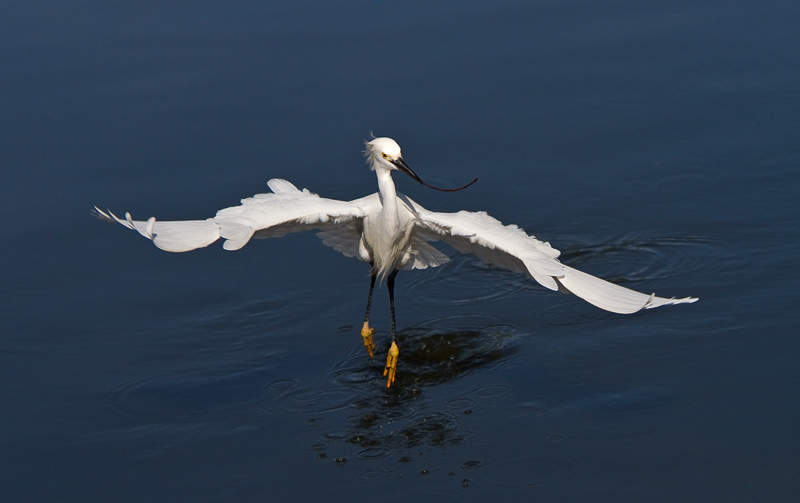
Snowy Egret with dip-gathered
stick for nest, Gatorland, Kissimmee, FL
Image copyright
2010/Arthur Morris/BIRDS AS ART
Canon 70-200mm f/4L IS lens with the 1.4X II
TC and the EOS-7D. ISO 400. Evaluative metering -1 stop:
1/2000 sec. at f/8 set manually after histogram check.
My very favorite 7D
AF Area Selection Mode is one that many folks recommend against for
flight <smile> You can learn the details in the 7D User's Guide.
I used a 30% Linear Burn to increase the density of the whites and
restore detail. You can learn to use Linear Burn in Digital
Basics:
https://store.birdsasart.com/shop/category.aspx?catid=32
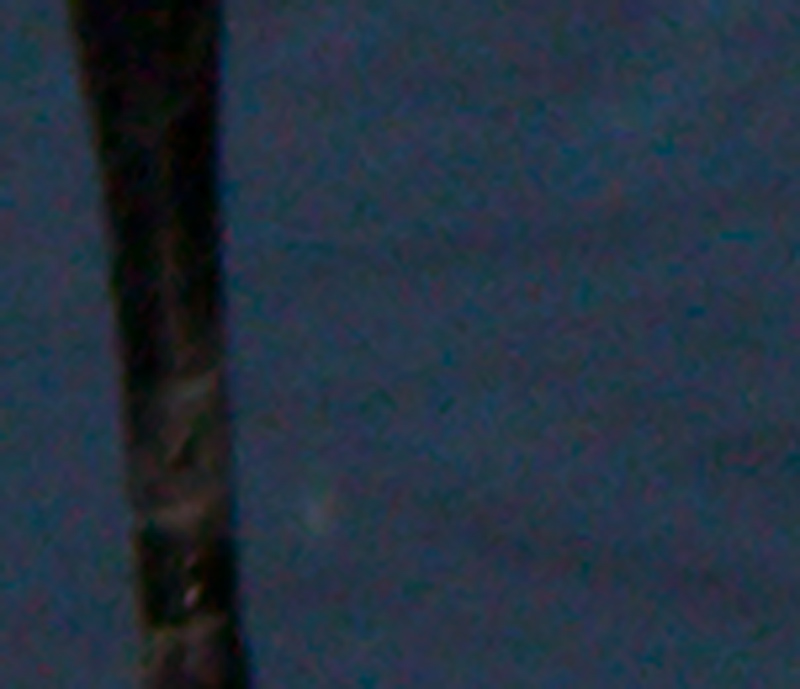
Many folks, especially the on-line
experts, have expressed grave concern with noise in some 7D images.
There are several factors involved. As a general rule, there will be
more noise in images created with cameras that have more and smaller pixels
than in images created with cameras that have fewer and larger pixels.
Second, by exposing as far to the right as possible, you will reduce the
amount of noise in your images. Third, by becoming proficient at using
either Photoshop noise reduction or one of the plug-in noise reduction
programs, you will find that in nearly all cases that noise can be
controlled without any great effort of skill required.
The top image here is a huge crop from the
original "Snowy Egret with dip-captured stick "capture above. Chroma noise
is quite evident. Below, is the same crop with Photoshop Noise
Reduction applied. First, I selected the background and put it on its
own layer. Then I ran Photoshop Noise Reduction. The were some
problems with the edges of the black legs and bill so after I flattened the
image I used the Clone Stamp at 30% hardness to clean up the edge-blurring.
You can learn all of these techniques in Digital Basics:
https://store.birdsasart.com/shop/category.aspx?catid=32
CANON EOS-7D USER'S
GUIDE INFO
I can honestly say that the 7D guide is
amazing. Pretty much everything on the 7D is brand new and many folks have
been seen shaking their heads in confusion. Learn everything that you
need to know about setting up and operating your camera so that you are able
to consistently produce the images that you want. This all new guide
will open your eyes as to the possibilities. I share all of my Menu and
Custom Function settings along with the reasons for each choice. I describe
each of the five AF Area Selection Modes in detail and let you know which ones
I use for what and why! And I have written a totally new section
on making micro-adjustments. There is a ton of stuff in this guide that
you will never see or hear anywhere else.
You will, for example, learn how I create, save and use three different
personalized Camera User Settings. Or how to set up and use Live View
for a variety of nature photography applications. The entire guide is of
course written in my easy to read, easy to follow, designed for dunces how-to
style <smile> So easy that even a child could follow along. Do note
that 7D UG does not cover the creation of video.
The first complete edition of the Canon
EOS-7D User’s Guide PDF is available now. Updates--there will be at least
one--will always be free.
The 7D User's Guide (7D UG) sells for $30 if you
send a check or a PayPal or call with a credit card in hand. If
you purchase the 7D UG through the BAA On-line store, a $2.00 discount will be
applied. Order your copy today for only $28 through the store by clicking
here:
https://store.birdsasart.com/shop/item.aspx?itemid=285.
Wood Stork ,descending flight, Brandon, FL
Image copyright 2010/Arthur Morris/BIRDS AS ART
Canon 800mm f/5.6 L IS lens with the EOS-1D Mark IV. ISO 320.
Evaluative metering at zero: 1/1600 sec. at f/7.1 set manually.
After working on the Mark IV guide I tweaked a few settings and used the
new larger test chart to micro-adjust the 800/Mark IV combo (with and
without the 1.4X II TC). My flight images were noticeably and consistently
sharper. To create this image while working on the Mongoose M3.5/Gitzo CF
3530 LS combo, I used 45-Point AF with great success.
CANON EOS-1D MARK IV
USER'S GUIDE INFO
The first complete edition of the Canon
EOS-1D Mark IV User’s Guide PDF is available now. Updates--there will be at
least one--will always be free.
As the MIV is in many ways similar to the Canon
EOS-1D MIII camera body, folks moving to the Mark IV from the Mark II will not
be as challenged as those who have used any other Canon professional or pro-sumer.digital
camera bodies. That said there are enough new bells and whistles
on the Mark IV to make it a valuable learning experience even for Mark III
folks. The MIV UG is fairly comprehensive; it covers all of the camera
controls including buttons, dials, and wheels and most of the menu items and
Custom Functions except those dealing with video. As always, the Mark IV
UG is written in my easy to read, easy to understand style.
After following my own directions and doing the
micro-adjustment on my Mark IV/800 combo I wound up setting +4 for that combo
alone and +6 for when I added the 1.4X II TC. My already sharp images
got just a bit sharper!
The Mark IV User's Guide sells for $25 if you send
a check or a PayPal or call with a credit card in hand. If you order through
the through the BAA On-line store, a $2.00 discount will apply. To order your
copy now and save $2.00, click here:
https://store.birdsasart.com/shop/item.aspx?itemid=286.
Roseate Spoonbill gathering nesting
material, Gatorland, Kissimmee, FL
Image copyright 2010/Arthur Morris/BIRDS AS ART
Canon 800mm f/5.6 L IS lens with the the EOS-1D Mark IV. ISO
400. Evaluative metering -1/3 stop: 1/2000 sec. at f/5.6.
The Gatorland spoonbills are most active in the afternoons.
AIDAN BRIGGS
Last year on the Morro Bay IPT I had the
pleasure of meeting a fine young photographer from Templeton, CA named Aidan
Briggs in person. ( had know Aidan on BPN almost from the beginning.
Most folks assumed that he was an adult because of the quality of both his
images and his critiques. He is in fact currently a sophomore in high
school. About a year ago, I had the pleasure of nominating
him for a NANPA High School scholarship and was thrilled when he was
accepted. After we both attended the Summit Aidan wrote this short
piece especially for the Bulletin:
The NANPA High
School Scholarship Program is one of the most popular NANPA programs. The
2010 program, in Reno, Nevada, was led by new director Raymond Klass; it was
a huge success. (You can check out Raymond’s work here:
http://www.klassphoto.com/). Conducted during the week of
the NANPA Summit, the scholarship program consisted of two days in the
field, one day processing the images, and three days at the Summit. The
first two days were spent shooting at Lake Tahoe, Pyramid Lake, and at a
geyser on private property. Each of the locations was stunningly beautiful.
Canon USA generously provided all ten students with Canon EOS-7D camera
bodies and a variety of lenses. Things couldn’t have gone much better. The
weather was perfect, the instructors were excellent, and the other students
were fun to work with and be with. We were always surrounded by plentiful
photographic opportunities. The only thing I wished for was a bit more
variety in the subject matter; we worked with landscape photography almost
exclusively. While the days out in the field were great, the best part of
the program was the summit itself. It is hard to describe the breadth of the
opportunities that were available there. We would attend the keynote and
breakout sessions and then have people such as George Lepp, Darrel Gulin,
Christina Mittermeier, and Arthur Morris come in and give presentations. We
also got to talk to stock agents and editors including
a National Geographic editor The sheer number of important connections
that we made and the information that was provided us were by far the most
noteworthy parts of the scholarship experience. One bonus of being in the
scholarship program was the gear that we got to use for the week. In
addition to the 7Ds, the Gitzo tripods, the iMac Computers, and the ipods
that were provided, we also received free copies of Lightroom, various
books, HoodLoupes, and a bunch of other great stuff from Gary Farber of
Hunt’s Photo. There is no other way to sum up the scholarship program than
say simply that it was a great experience.
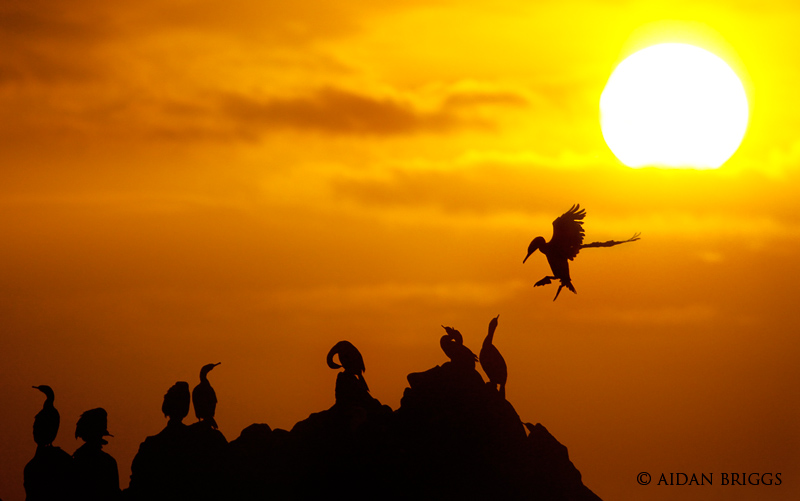
Cormorants at sunset, CA/Image
copyright 2010/Aidan Briggs
After working with Aidan for a day or two in California last year I was
impressed with both Aidan the photographer and Aidan the young man.
Geyser scenic, NV/Image
copyright 2010/Aidan Briggs
LONGWOOD GARDENS, PENNSYLVANIA
APRIL 24, MACRO WORKSHOP
Join BPN moderators Roman Kurywczak and
Denise Ippolito for one of two half-day macro photography workshops at
this spectacular botanical location. For more information, click
here:
POSSE NEWS/JIM NEIGER
Flight School Photography in Osprey Heaven, Lake Blue Cypress (east of Vero
Beach, Florida): May 13-17, 2010 and May 20-24, 2010. (Limit: 5):
$1300. $200 Late Registration
Discount: now only $1100.
Jim has spent years perfecting his techniques
for photographing birds in flight using large telephoto lenses handheld.
The focus of these workshops will be learning Jim’s hand held, long lens
techniques for photographing birds in flight and in other action. The
workshops will be held in some of the most beautiful, wild, and unspoiled
wilderness areas of central Florida.
Each workshop will include a four hour
classroom session, welcome dinner, four morning photography sessions, and
three afternoon photography sessions. Each photography session will be of
three to four hours in duration. Five of the photography sessions
will (weather permitting) be conducted via a specially configured pontoon
boat that has been customized for photography. The remaining
photography sessions will be in-the-field, land-based sessions. The
workshops will be limited to five participants so that everyone may
photograph in comfort and receive personalized instruction.
The photography sessions by boat will
be held on the unspoiled and unparalleled Lake Blue Cypress. This
spectacularly beautiful lake is virtually free of civilization and manmade
elements. The lake is surrounded by ancient cypress swamp and marshy
wetlands. Here, the gorgeous cypress trees grow from the lake bottom
surrounded on all sides by water. Osprey nest by the hundreds in these
trees. Participants will be able to photograph the birds as the fly to and
fro, dive for fish, gather nesting materials, and feed their young chicks.
Some of the nests are actually at or below eye level . The only distractions
in this pristine wilderness environment are the constant cries of the Osprey
as they court in midair and defend their nests. Lake Blue Cypress is also a
landscape photographer's dream. The horizons contain nothing of man’s
influence and only the beauty of the real Florida wilderness. Perches and
backgrounds are spectacular beyond belief. April and May are the best
months to be at Lake Blue Cypress. Wildflowers cover the stumps and
trees like blankets of radiant color. The skies glow with spectacular,
multi-hued sunrises and sunsets. Seeing more than a hundred different
species of birds is possible on this trip. Large American Alligators
are commonly seen sunning themselves on top of the fallen trees and stumps.
The biggest problem for a photographer here is deciding which subject to
photograph. Even the weather cooperates this time of year. It is
the dry season and clear, sunny days are the most common weather condition.
The photography sessions on land will be held in
remote areas of southern Osceola County. Here, participants are likely
to have opportunities to photograph birds that are endangered and rarely
seen. Possible species include: Swallow-tailed Kite, Red-shouldered
Hawk, Pileated Woodpecker, Barred Owls, Whooping Cranes, and Great Horned
Owls, among others. Sand hill Cranes, a common bird in Central
Florida, are tame enough to approach as closely as you like.
Participants will also learn how to safely use bird song recordings to
attract birds. Jim has developed his own, innovative techniques for
using recordings to attract birds, in such a way, that amazing photographic
opportunities are common when they would be almost impossible otherwise.
This includes special techniques that encourage birds to fly and land in
desired ways; this provides spectacular opportunities for flight images and
for creating images on beautiful perches.
To see more great Blue Cypress images, click
here:
Sample Image Gallery.
To learn more about Jim and Flight School Photography, click here:
http://www.flightschoolphotography.com/
Each workshop
includes a four hour formal classroom instructional session, a welcome
dinner, 4 morning photography sessions, and 3 afternoon photography
sessions. The photography sessions include personalized instruction in
the field. Discounted lodging is available, but is not included in the
workshop fee. Payment of workshop fee must be made by check or money
order. Credit cards are not accepted.
For additional info, click here:
http://www.flightschoolphotography.com/Workshops/FSP%20LBC%20Workshops%202010/FSP%20LBC%20Workshops%202010.htm
Contact Information: Jim Neiger, Flight
School Photography, Inc. 550 Basin Drive, Kissimmee, FL 34744-4804.
Cell phone: (407) 247-5200. Website:
www.flightschoolphotography.com.
Email:
jimn@cfl.rr.com
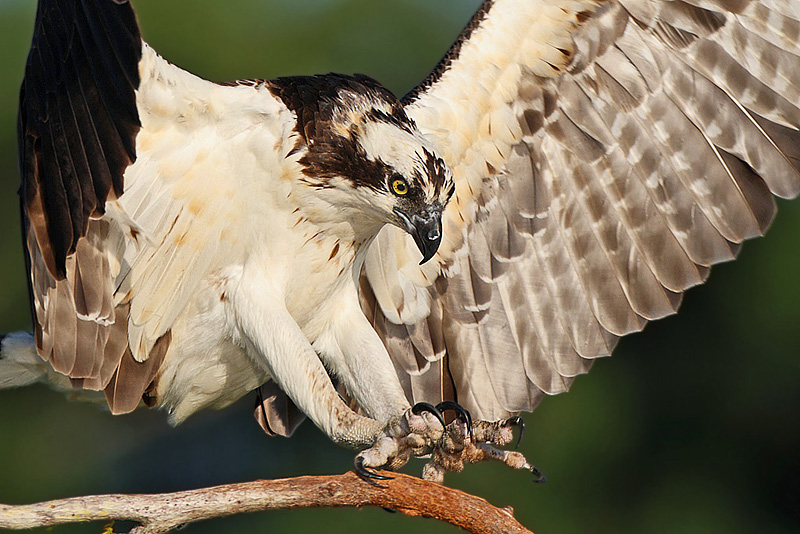
Osprey,landing close-up, Lake Blue Cypress, FL
Image copyright © 2009: Jim Neiger/Flight School Photography
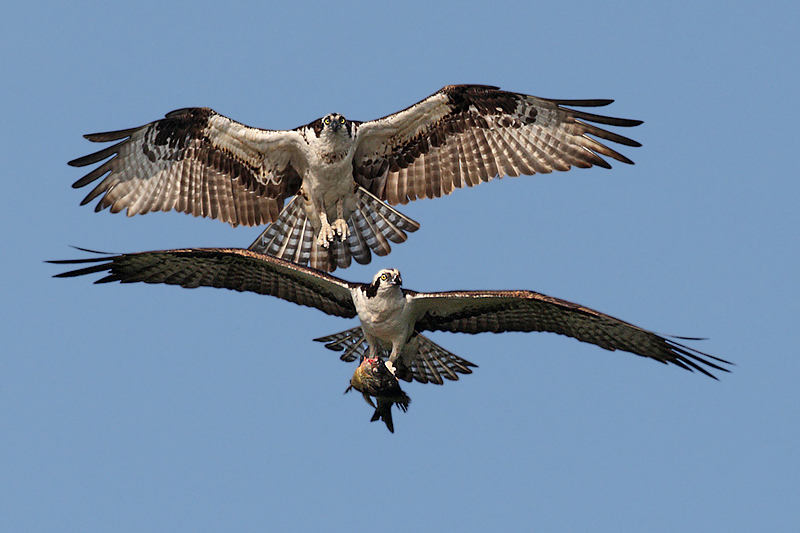
Osprey chase with fish, Lake Blue Cypress, FL
Image copyright © 2009: Jim Neiger/Flight School Photography
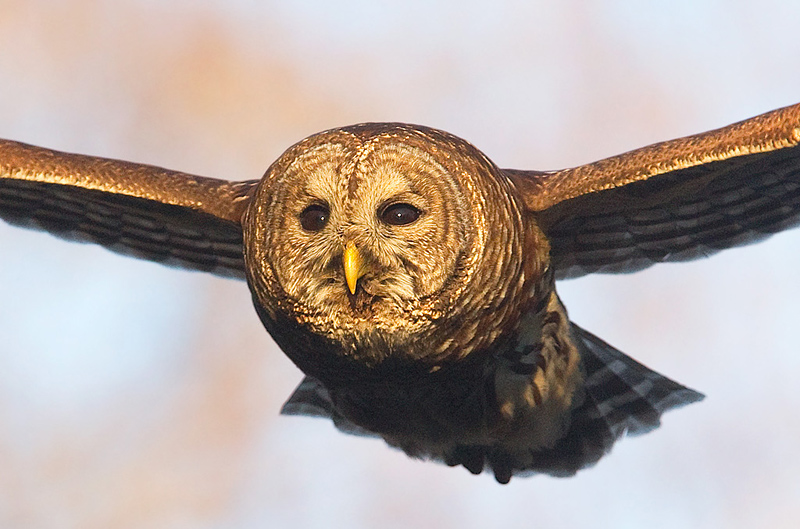
Barred Owl in Flight, Lake Blue Cypress, FL
Image copyright © 2009: Jim Neiger/Flight School Photography
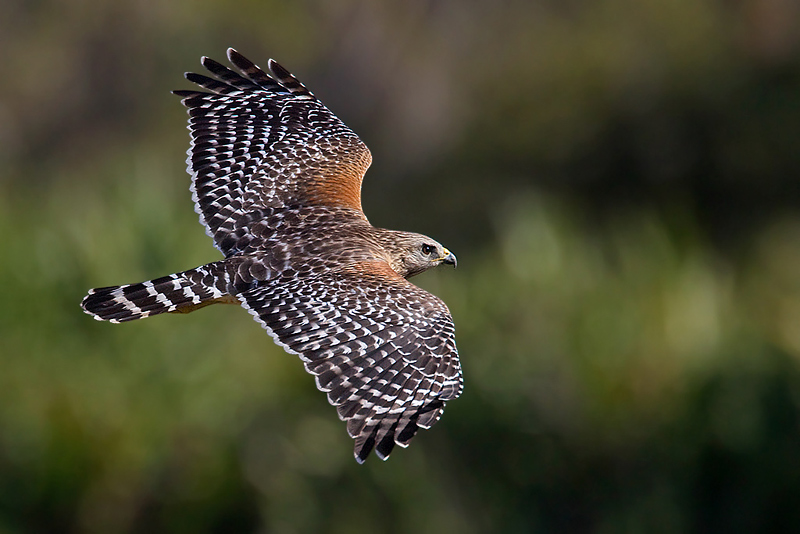
Red-shouldered Hawk, topside flight, Jim Neiger/Flight School Photography
POSSE NEWS/ROBERT
AMORUSO
The
“Original”
Gatorland Photographic Instructional Workshops/New Dates Added for June
2010.
Field Workshops: June 5-6, 2010
&
June 12-13, 2010.
Extensive in-the-field instruction at East Central Florida's best rookery
location, Gatorland in Kissimmee, FL. Includes two hour classroom
presentation “Successful Strategies
for Rookery Photography” and image critique sessions each day of
images you created during the workshop. Field instruction includes
isolating your subject, understanding light, proper exposure (exposing to
the right), using depth of field to your advantage, fill-flash and lots
more. CD with lesson plans included - no note taking required. Learn more
here:
http://www.wildscapeimages.biz/blog/?page_id=132
Field and Classroom: May 14-16, 2010. Three full days covering
everything that the field workshop does plus extensive classroom
instruction in image editing and optimization and presentations on
photographic technique concentrating on rookery photography. Learn
more here: http://www.wildscapeimages.biz/blog/?page_id=15
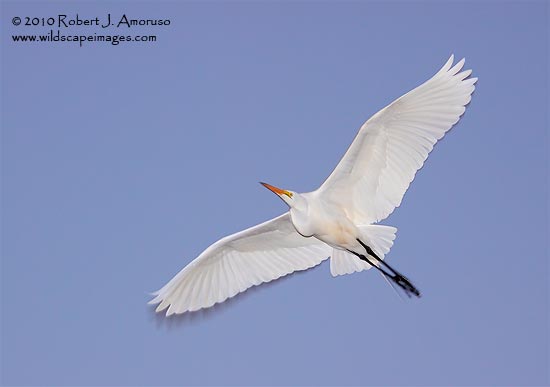
Great Egret in flight - Gatorland, Image Copyright 2009: Robert Amoruso
Canon 50D, Canon 70-200mm + 1.4x TC. 1/30 sec, f/5.6, Manual, Evaluative,
ISO 250, Flash Compensation +3.
Understanding the correct flash technique with birds in flight is key to
making images like this.
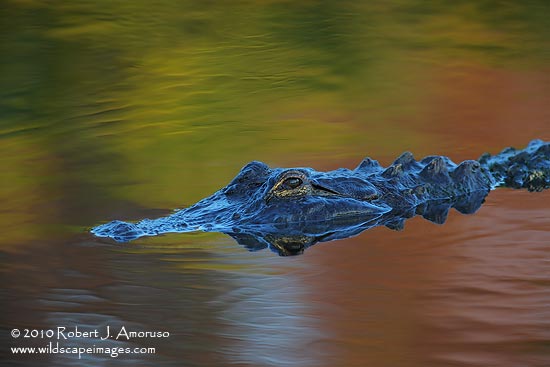
American Alligator, Gatorland, Image Copyright 2009: Robert Amoruso
Canon 5D Mark II, Canon 600mm + 1.4x TC. 1/200 sec, f/5.6, Manual,
Evaluative, ISO 800.
The light and reflections seen in this image last only a few minutes at
Gatorland. Knowing where to be and when at Gatorland, I can show you how
to create images like this. The blue color cast was intentionally left in
during image processing.
Lake Clark National Park, AK Coastal Brown Bear Photographic Instructional
Workshop, REDUCED PRICING, $400 Discount on this Workshop.
Join Robert
Amoruso July 21 to 27, 2010 on a journey photographing Coastal
Brown Bears in Lake Clark National Park on Cook Inlet in Alaska. We will
photograph male and female bears; some with cubs sedging on the open
plains, clamming and fishing. On each trip we have seen females nursing
their young. The workshop also includes a day’s trip to a Puffin and
Murres rookery island. Expert bear-savvy guides will transport us to our
photography locations. Our headquarters will be the famous Silver Salmon
Creek Lodge – after a day of photography warm yourself in the cozy lodge,
enjoy fabulous meals and great company before retiring to a warm bed. In
2007 I created two images that went on to become NANPA Showcase top-ten
and top-100 winners. Learn more here:
http://www.wildscapeimages.biz/blog/?page_id=143.
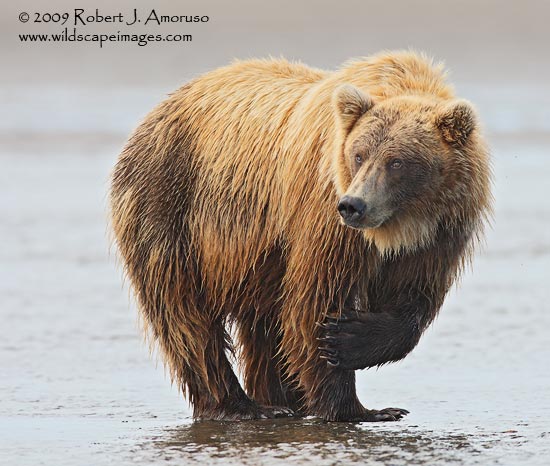
Coastal
Brown Bear – Lake Clark National Park, AK, Image Copyright 2009: Robert
Amoruso
Canon 1D
Mark III, Canon 600mm ,1/500 sec, f/5.6, Manual, Evaluative, ISO 800
Proper
exposure is key to rendering shadow details in bear images.
Please contact Robert for additional info or to learn about his Private
Photographic Instructional Workshops: 407-808-7417 (cell). E-mail:
wildscapeimages@att.net. Images:
www.wildscapeimages.com. Workshop info:
www.wildscapeimages.biz/blog.
BOSQUE del APACHE 2010 IPT:
'The
Complete Bosque Experience.' NOV 20-26, 2010. Slide program on the
evening of Friday, NOV 19. 7-FULL DAYS: $3199.
(Non-refundable deposit: $500; see details below.) Limit: 10/Openings: 6.
Co-leaders: Robert O�Toole, Jim Heupel, and multiple
BBC Wildlife Photographer of the Year honoree Chris Van Rooyen of South
Africa (/www.wildlifephotography.co.za/). Live,
eat, and breathe photography with one of (if not the) world's premier
photographic educators at one of his very favorite locations on the planet.
Plus great co-leaders and top-notch Photoshop instruction.
San Diego
IPT JAN, 2011. DATES TBA.
5 Full Days: $2499 (Limit 8/Openings:
6). I
will announce the dates once I get a look at a tide table. I already
have two deposits even without a firm date!
Slide
program on the evening before the first day of the IPT. A fully refundable
$500 deposit now will hold your spot until the dates are announced.
Once the dates are announced let me know either way. If you opt in,
then your deposit will become non-refundable and you will be asked to
complete the registration and release forms. Brown Pelicans, Wood and
Ring-necked Ducks, Western and Heerman's Gulls, Marbled Godwits, and lots,
lots more.
SW FLA
PRESIDENT'S WEEK IPT: 2011 DATES TBA: $2899.. (Limit 10). If
you would like your name placed on the interested list for this
IPT, please e-mail me at
birdsasart@att.net. Or send me a
deposit as below <smile> Same story as above on the dates: I am
waiting for the publication of the tide tables.
A non-refundable deposit of $500 is required to hold a spot for each of
the above IPTs. Deposits may be paid by check, PayPal, or credit card.
Payment in full (by check or money order only) is due four months before
the start of each trip and is non-refundable unless the IPT sells out.
You will be required to sign a statement of understanding to this
effect. Travel insurance is of course highly recommended.
Travel Insurance Services offers a variety of plans and options.
Included with the Elite Option or available as an upgrade to the Basic &
Plus Options, you can also purchase Cancel for Any Reason Coverage,
which expands the list of reasons for your canceling to an infinite
list, from a sudden work or family obligation to a simple change of
mind. My family and I use and depend on the great policies offered
by TIS whenever we travel. You can learn more here:
http://www.travelinsure.com/what/selecthigh.asp?32940. Do note
that many plans require that you purchase your travel insurance within
14 days of our cashing your deposit check of running your credit card.
We regret that we must implement this new policy but we have been
plagued by last minute cancellations that make it impossible for others
to participate and deprive us of essential income. In addition,
these policies protect you against unexpected developments, injuries, or
illnesses.
Important note: please print, fill out, and sign
the registration and release forms and include them with your deposit
check (made out to "Arthur Morris." ) If you use a credit card to
register, please fill out, sign, and mail the two forms asap. Your
registration will not be complete until we receive your paper work.
You can find the forms here:
http://www.birdsasart.com/Registration%20and%20Release%20Forms.pdf.
2011 Galapagos Photo Cruise of a Lifetime IPT/The Complete Galapagos
Photographic Experience:
July 3-20, 2011
(July
5-19, 2011
on the boat): 13
1/2 days of photography plus a last morning panga ride: $12, 499.
(Limit 11/Openings 3)
leaders). See item one above for complete
details.
ROBERT
O'TOOLE PHOTOGRAPHY HOMER BALD EAGLE INSTRUCTIONAL PHOTO-TOUR WITH
ARTHUR MORRIS/BIRDS AS ART.
March
18-22, 2011 & March 24-28.
5-FULL DAYS: $3249. Limit: 12 (including the leaders).
Both of these trips sold out with long
waiting lists within hours after being announced to the BAA Friends
List. The Friends List is made up of IPT veterans who fit in the
happy camper category. If you have been on an IPT and would like
your name added to the BAA Friends List, please e-mail me at
birdsasart@att.net and include a
short note.
Great Egret back feathers, Gatorland,
Kissimmee, FL
Image copyright 2010/Arthur Morris/BIRDS AS ART
Canon 400mm f/4 IS DO lens (handheld) with the 1.4X II TC, 37mm of
extension, and the EOS-1D Mark IV. ISO 400. Flash as main light
with Better Beamer: 1/250 sec. at f/16. Manual flash at 1:8.
As I was creating this image I knew that I would use the
Fractalius BW-Sketch-01 pre-set to create the image below <smile>
Best and great
picture-making,
artie
Note:
Arthur Morris has been a paid Canon contract
photographer, part of the Explorers of Light program, since 1996 and
continues in that role today. Hunt's Photo of Boston, MA is a BAA
sponsor as is Delkin Devices. Back issues of all BAA Bulletins can be
found in the Bulletin Archives that may be accessed here:
http://www.birdsasart.com/bn.html
